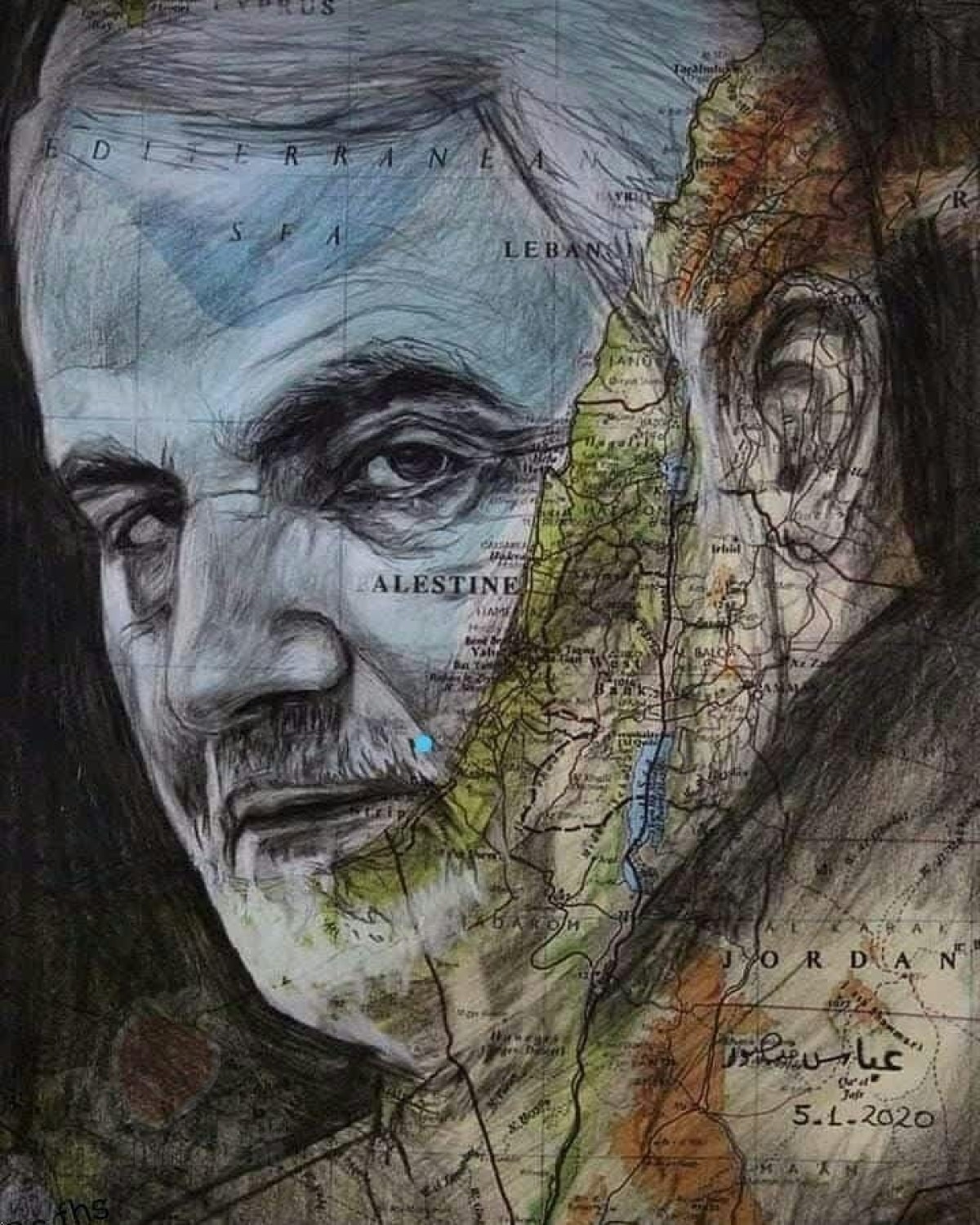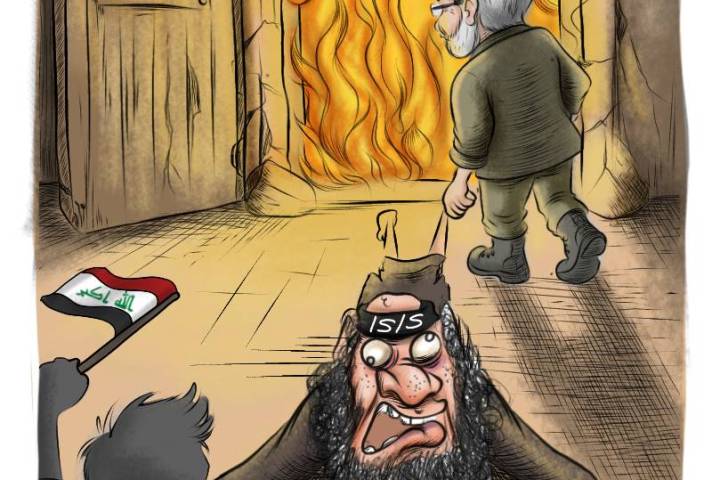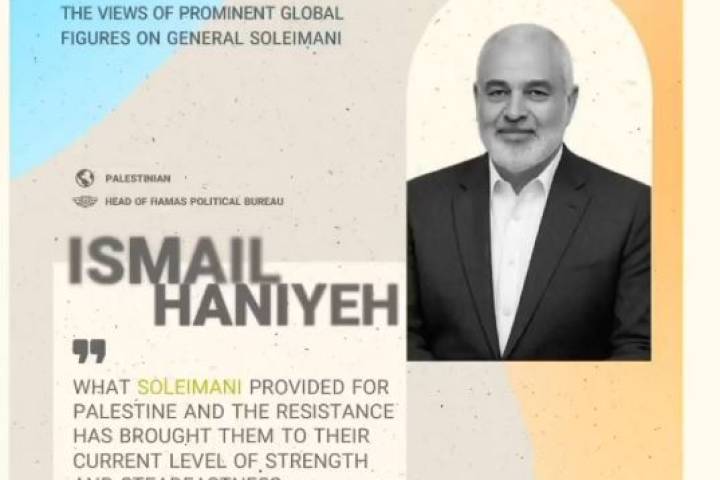Blood of the Earth: General Soleimani’s battle for saving Middle-East’s oil
Since WWII, maintaining the security of the Middle-East’s vast energy resources become one of the main characteristics of US foreign policy.
Many experts believe that even if Washington managed to meet its needs of fossil energy domestically, yet the White House would continue to cast its covetous eyes on the flow of oil through the Strait of Hormuz.
Therefore, to ensure the security of its energy resources in the future, the United States has combined disparate methods such as adopting unilateral policies, igniting proxy wars, direct military occupation and subversive changes in the political structures of the oil-rich countries in the Middle-East region.
There have been serious discussions surrounding the alleged role of the CIA in creating the ISIS as a golden mean to control the Iraqi and Syrian oil fields. The United States, in alliance with its reactionary Arab partners, e.g. Saudi Arabia, used ISIS terrorists to wrest control of the Iraqi and Syrian oil, but with no avail.
In summer 2014, following the takeover of %95 of the main Syrian oil fields, ISIS Crude oil output immediately leapt forward to reach 30,000 barrels per day. ISIS oil export went even higher and reached about 45,000 barrels per day in February 2015. Given the price of oil in the second half of 2015, it can be surmised that ISIS’ income from oil transactions was nearly $ 1.5 million per day. But following ISIS’ successive defeats since 2016, ISIS’ production of crude oil and its smuggling through the Iraqi and Syrian porous border has sharply decreased.
Attaching great importance to Iraqi and Syrian oil resources, the Pentagon has stationed 5.000 US troops in Iraq. Moreover, since 2016, the US army has illegally seized a 55-kilometre territory near the Al-Tanaf airbase, located in southern Syria, as the U.S. Marines have been training hundreds of Syrian rebels in that base.
It should be noted that before the Syrian civil war in 2011, Damascus produced a small amount of crude oil, approximately 400,000 barrels per day, only for its domestic consumption.
Enjoying a unique position in the north-south energy corridor, Iran cannot accept American unilateralism and bullying. Hence, the late Haj Qassem Soleimani, as the commander of Iran’s Quds Force, to the dismay of the American imperialists, was determined to help Syrians and Iraqis maintain their independence and to prevent the US and its terrorist proxies, namely ISIS, to further pillage the natural resources of the Muslim Iraqi and Syrian nations.
Thus, it was in March 2016, when Iran’s Russian allies launched an aerial bombardment, targeting ISIS positions near the ancient city of Palmyra, Concurrently, the Syrian land forces– supported by the Iranian advisory mission– breaking ISIS defence lines. Soon, after one month of fierce fighting, the allied forces scored a flash victory by liberating Palmyra and the oil and gas fields in its vicinity. Afterwards, the Syrian army units started their campaign to liberate the flash-point cities Deir Ez-Zor, Al-Mayadin and ultimately Bukmal. In fact, it was Martyr Soleimani who made it possible for the Russian oil firms in 2017 to operate once again in the Syrian oil and gas fields.
In Iraq, the fight against ISIS for the liberation of Mosul and other parts of western and northern Iraq had intensified; But the Iraqi army alone could not continue the battle. At this juncture, at the suggestion of Gen. Soleimani, the Popular Mobilisation Forces (PMF), composed of Iraqi volunteers, was established which later played a significant role in liberating Mosul and other parts of Iraq, including Kirkuk, from ISIS yoke.
Gen. Soleimani’s actions which intended to prevent the US from plunder Syria and Iraq were of great concern to the White House officials. Consequently, Donald Trump’s administration began to deliberate on how to assassinate Haj Qassem Soleimani. At first, the Americans started to sow seeds of division, animosity and confrontation between the Iraqi and Iranian nations. After failing in this vicious scheme, the American terrorist army martyred Gen. Soleimani and Abu Mahdi Al-Mouhandis and their comrades.
1
Since WWII, maintaining the security of the Middle-East’s vast energy resources become one of the main characteristics of US foreign policy.
Many experts believe that even if Washington managed to meet its needs of fossil energy domestically, yet the White House would continue to cast its covetous eyes on the flow of oil through the Strait of Hormuz.
Therefore, to ensure the security of its energy resources in the future, the United States has combined disparate methods such as adopting unilateral policies, igniting proxy wars, direct military occupation and subversive changes in the political structures of the oil-rich countries in the Middle-East region.
There have been serious discussions surrounding the alleged role of the CIA in creating the ISIS as a golden mean to control the Iraqi and Syrian oil fields. The United States, in alliance with its reactionary Arab partners, e.g. Saudi Arabia, used ISIS terrorists to wrest control of the Iraqi and Syrian oil, but with no avail.
In summer 2014, following the takeover of %95 of the main Syrian oil fields, ISIS Crude oil output immediately leapt forward to reach 30,000 barrels per day. ISIS oil export went even higher and reached about 45,000 barrels per day in February 2015. Given the price of oil in the second half of 2015, it can be surmised that ISIS’ income from oil transactions was nearly $ 1.5 million per day. But following ISIS’ successive defeats since 2016, ISIS’ production of crude oil and its smuggling through the Iraqi and Syrian porous border has sharply decreased.
Attaching great importance to Iraqi and Syrian oil resources, the Pentagon has stationed 5.000 US troops in Iraq. Moreover, since 2016, the US army has illegally seized a 55-kilometre territory near the Al-Tanaf airbase, located in southern Syria, as the U.S. Marines have been training hundreds of Syrian rebels in that base.
It should be noted that before the Syrian civil war in 2011, Damascus produced a small amount of crude oil, approximately 400,000 barrels per day, only for its domestic consumption.
Enjoying a unique position in the north-south energy corridor, Iran cannot accept American unilateralism and bullying. Hence, the late Haj Qassem Soleimani, as the commander of Iran’s Quds Force, to the dismay of the American imperialists, was determined to help Syrians and Iraqis maintain their independence and to prevent the US and its terrorist proxies, namely ISIS, to further pillage the natural resources of the Muslim Iraqi and Syrian nations.
Thus, it was in March 2016, when Iran’s Russian allies launched an aerial bombardment, targeting ISIS positions near the ancient city of Palmyra, Concurrently, the Syrian land forces– supported by the Iranian advisory mission– breaking ISIS defence lines. Soon, after one month of fierce fighting, the allied forces scored a flash victory by liberating Palmyra and the oil and gas fields in its vicinity. Afterwards, the Syrian army units started their campaign to liberate the flash-point cities Deir Ez-Zor, Al-Mayadin and ultimately Bukmal. In fact, it was Martyr Soleimani who made it possible for the Russian oil firms in 2017 to operate once again in the Syrian oil and gas fields.
In Iraq, the fight against ISIS for the liberation of Mosul and other parts of western and northern Iraq had intensified; But the Iraqi army alone could not continue the battle. At this juncture, at the suggestion of Gen. Soleimani, the Popular Mobilisation Forces (PMF), composed of Iraqi volunteers, was established which later played a significant role in liberating Mosul and other parts of Iraq, including Kirkuk, from ISIS yoke.
Gen. Soleimani’s actions which intended to prevent the US from plunder Syria and Iraq were of great concern to the White House officials. Consequently, Donald Trump’s administration began to deliberate on how to assassinate Haj Qassem Soleimani. At first, the Americans started to sow seeds of division, animosity and confrontation between the Iraqi and Iranian nations. After failing in this vicious scheme, the American terrorist army martyred Gen. Soleimani and Abu Mahdi Al-Mouhandis and their comrades.
1
Abu Mahdi al-Mohandes
Abu Mahdi al-Mohandis
Abu Mahdi al-Muhandis
America
American
Americans
army
Daesh
Donald J. Trump
Donald Trump
Gen. Soleimani
general soleimani
General Soleimany
qasem soleimani
Haj Qasem soleimani
Hard revenge
hard revengre
Hormuz
IRAN
iranian
Iranian embassy
Iraq
Iraqi
Iraqi people
ISIS
Martyr Soleimani
middle east
Middle-Eas
oil
poster soleimani
Qasem Soleimani
Qassem soleimani
Quds Force
Russian
severe revenge
Soleimani
Soleymani
Syrian
Syrian Arab
trump
United States
US
USA
Washington






Comment
Post a comment for this article